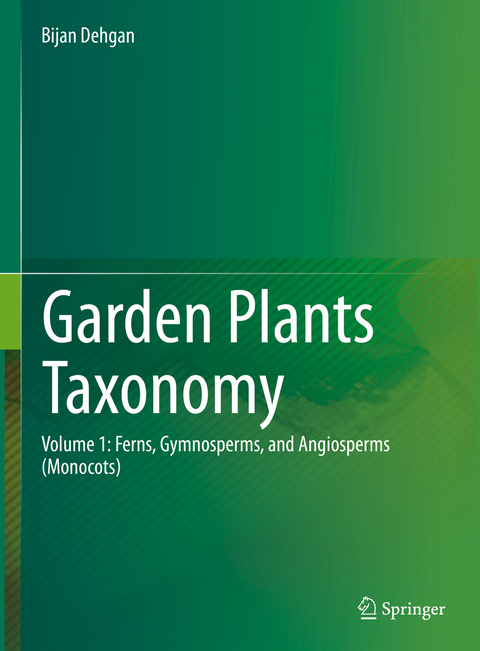
Garden Plants Taxonomy
Springer International Publishing (Verlag)
978-3-031-11560-8 (ISBN)
Horticulture has remained far behind in understanding of botanical principles. Recent phylogenetic (DNA-based) reorganization of higher plants has revolutionized taxonomic treatments of all biological entities, even when morphology does not completely agree with their organization. This book is an example of applying principals of botanical phylogenetic taxonomy to assemble genera, species, and cultivars of 200 vascular plant families of ferns, gymnosperms, and angiosperms that are cultivated for enhancement of human living space; homes, gardens, and parks. The emphases are on cultivated species but examples of some plants are often shown in the wild and in landscapes. In providing descriptions, it is assumed that students and other interested individuals have no background in general botany (plant characteristics), or nomenclature. Fundamental features of all plant groups discussed are fully illustrated by original watercolor drawings or photographs.
Discussion of the families is grounded on recent botanical phylogenetic treatments, which is based on common ancestry (monophyly). Of course, phylogenetic taxonomy is not a new concept, and was originally based on morphological characteristics; it is the DNA-based phylogeny that has revolutionized modern biological classifications. In practical terms, this book represents the horticultural treatment that corresponds to phylogenetic-based botanical taxonomy, to which is added cultigens and cultivated genera and species. Hence, the harmony between horticultural and botanical taxonomy.
This book covers phylogenetic-based taxonomy of Ferns, Gymnosperms, and Angiosperms (Monocots). A companion volume covers Angiosperms (Eudicots).
Bijan Dehgan received degrees in Agricultural engineering from Shiraz University (in Iran), certificate in American Language from Columbia University, BS and MS in landscape and Environmental Horticulture and Ph.D. in botany (plant taxonomy, under Professor Grady L. Webster) at the University of California, Davis. While working on systematic of the genus Jatropha (Euphorbiaceae), he was a lecturer in Environmental Horticulture and curator of the Botanical Conservatory. He was the principal researcher on selection and propagation of drought tolerant plants for California highways. He transferred to the Department of Environmental Horticulture at the University of Florida in 1978 and retired as emeritus professor in 2006. Although the principal investigator in several research projects, his primary focus remained on taxonomy of Jatropha and successful conservation of the endangered cycads through their propagation and growth, so as to prevent collection of wild plants. Abundance of Zamia pumila (=Z. floridana) in landscapes is testimony to successful conservation of an endangered plant. He was also the principal investigator in revegetation of phosphate mines in Florida. His publications include "Landscape Plants for Subtropical Climates", "Public Garden Management: A Global Perspective", "Jatropha (Euporbiaceae) by University of California and New York Botanical Gardens, among others. He has been recipient of awards for teaching and for Contribution to the Advancement of Botanical Science by the Botanical Society of America.
Preface.- Introduction.- 1. Nomenclature.- 2. Lycopods And Monilophytes.- 3. Gymnosperms.- 4. Angiosperms: Flowering Plants.- Index.
| Erscheinungsdatum | 05.01.2023 |
|---|---|
| Zusatzinfo | XXIII, 700 p. 551 illus., 549 illus. in color. |
| Verlagsort | Cham |
| Sprache | englisch |
| Maße | 210 x 279 mm |
| Gewicht | 1915 g |
| Themenwelt | Naturwissenschaften ► Biologie ► Botanik |
| Technik ► Architektur | |
| Weitere Fachgebiete ► Land- / Forstwirtschaft / Fischerei | |
| Schlagworte | Garden plants • Horticultural taxonomy • Phylogeny • Plant characteristics • Plant cultivars • plant taxonomy |
| ISBN-10 | 3-031-11560-0 / 3031115600 |
| ISBN-13 | 978-3-031-11560-8 / 9783031115608 |
| Zustand | Neuware |
| Informationen gemäß Produktsicherheitsverordnung (GPSR) | |
| Haben Sie eine Frage zum Produkt? |
aus dem Bereich


